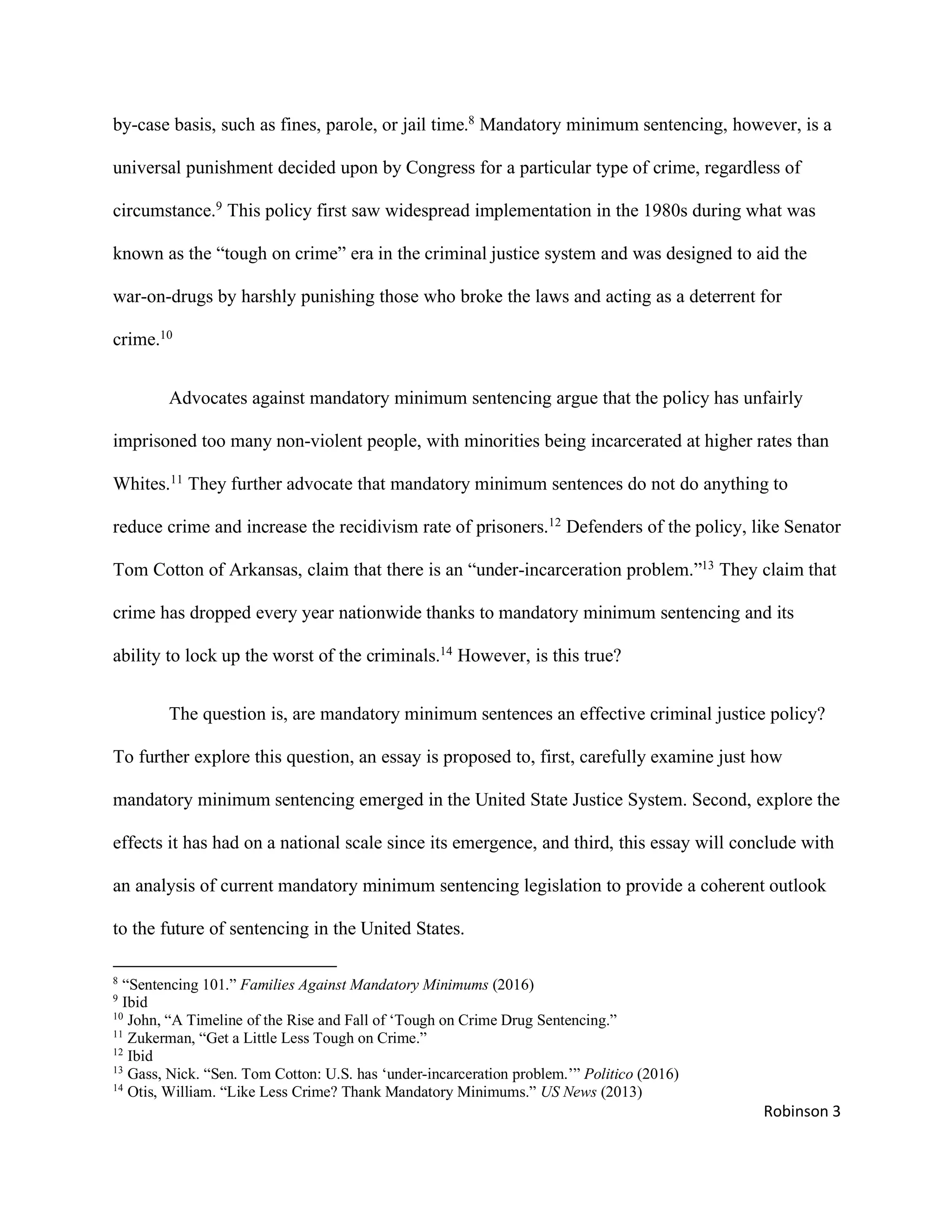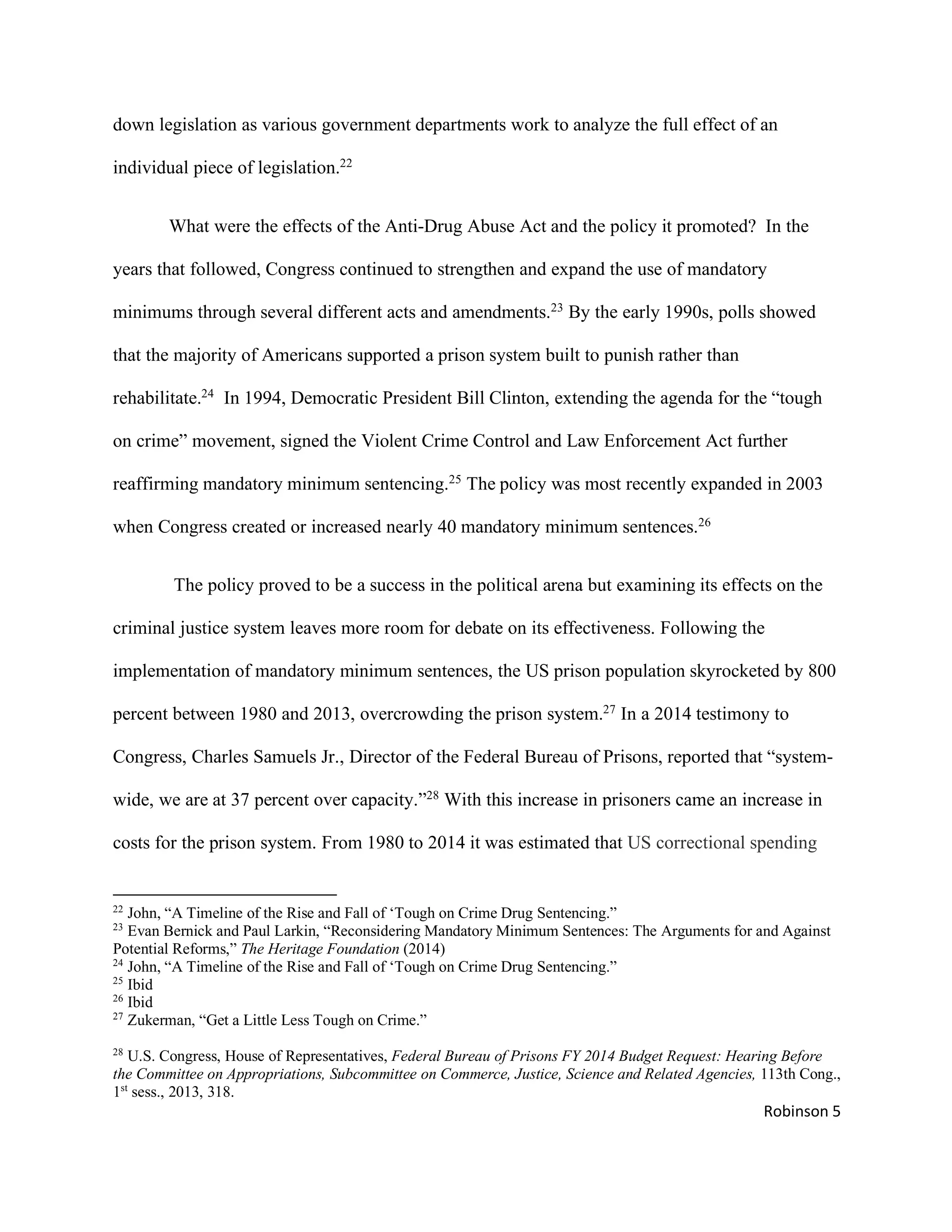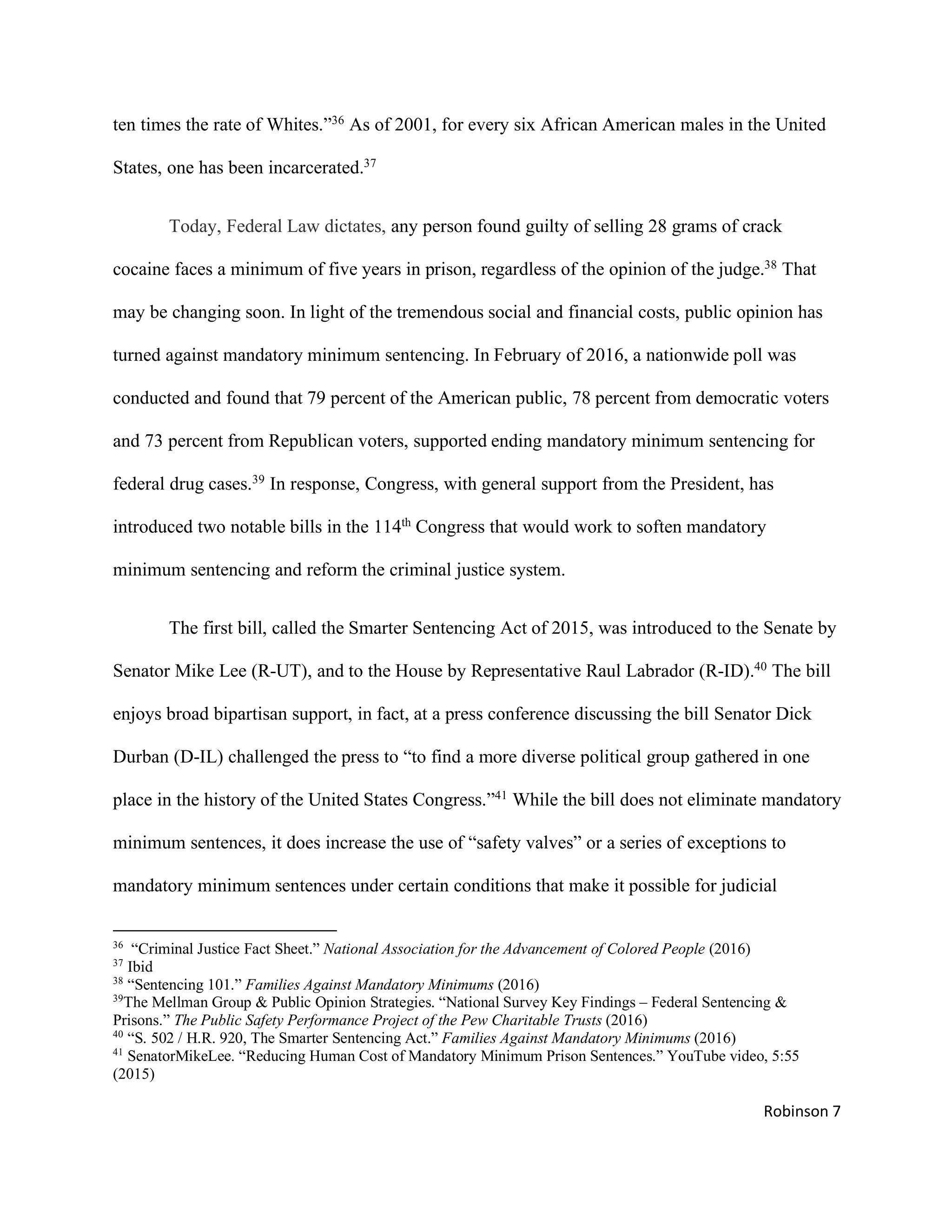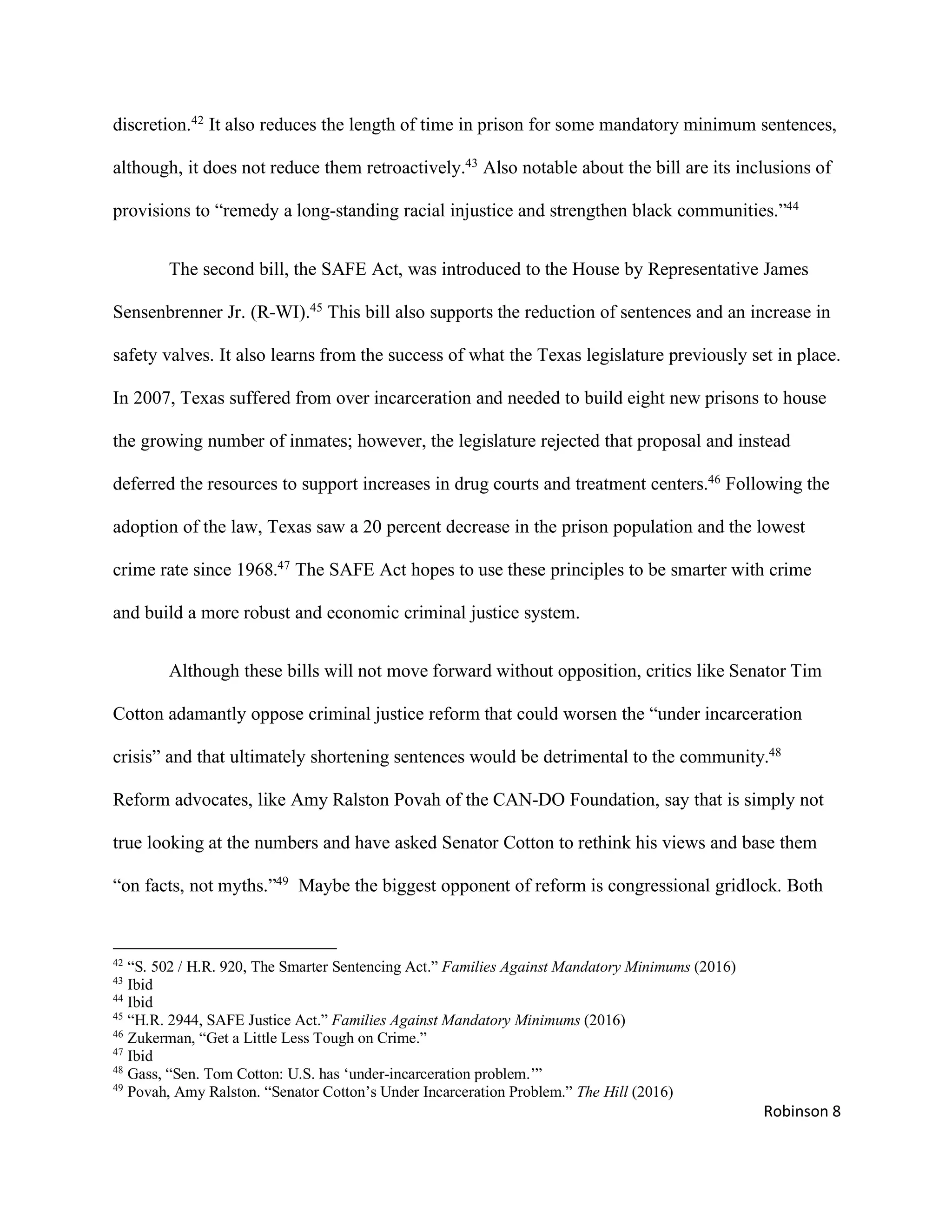Mandatory minimum sentencing emerged in the 1980s during the "War on Drugs" and led to a dramatic increase in the US prison population. The prison population grew 800% between 1980-2013 due to mandatory minimums for drug offenses, disproportionately impacting minorities. Recent bills like the Smarter Sentencing Act and SAFE Justice Act aim to reform mandatory minimums by increasing judicial discretion and reducing some drug sentence lengths, though opposition remains.










